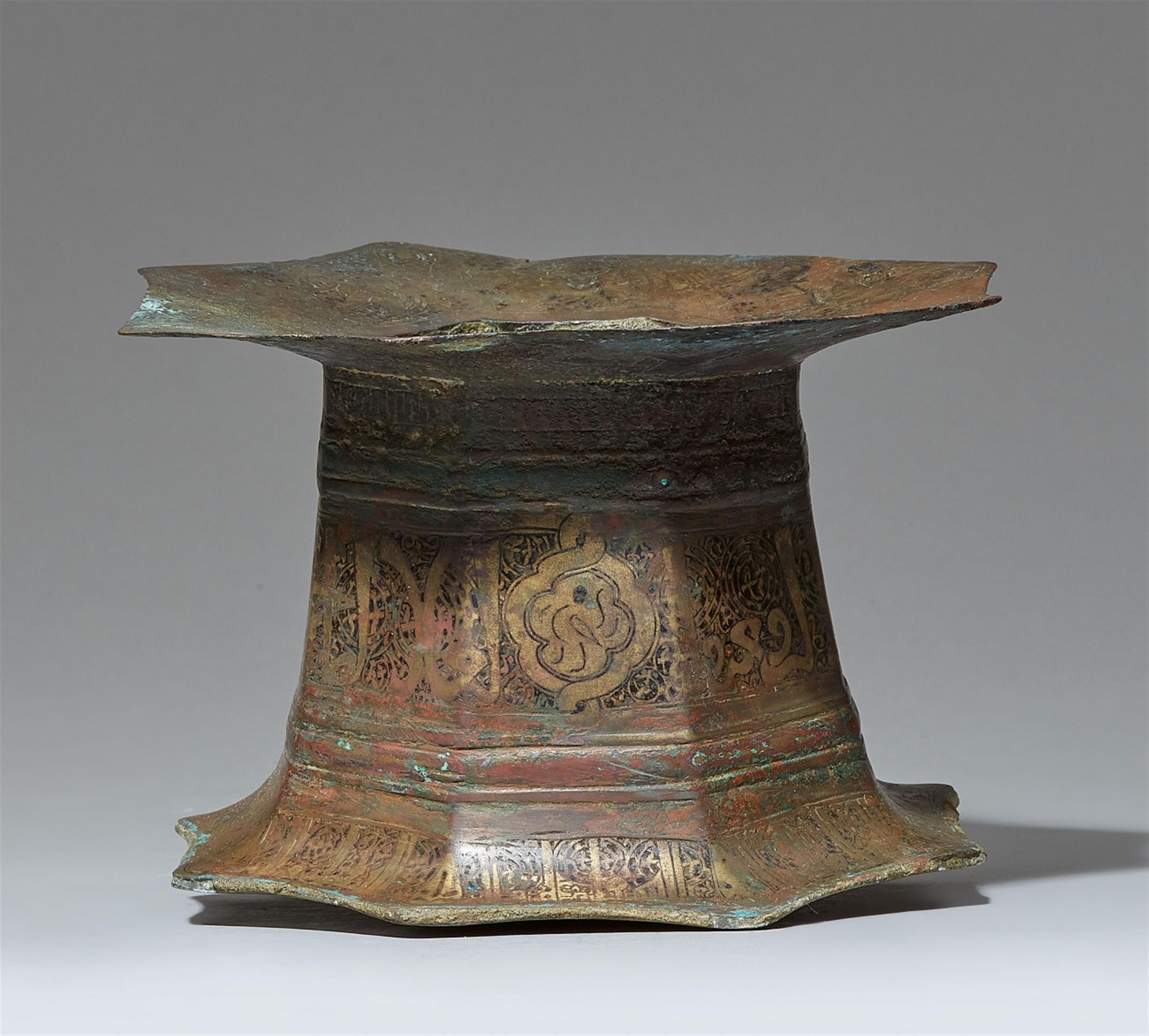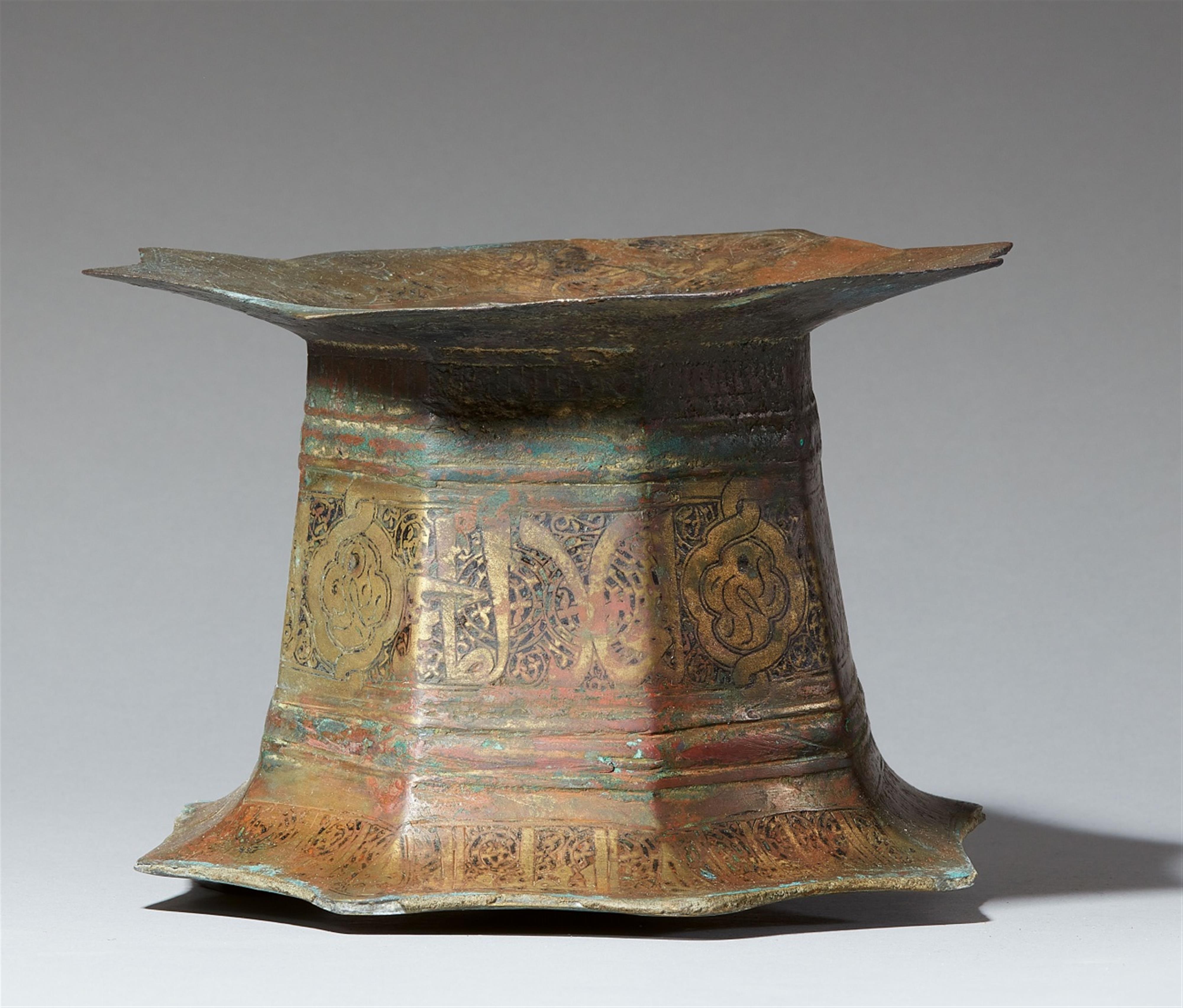An important Islamic mortar
Thin cast bronze body, chased and with remnants of red and black pigment and gilding. Of slightly tapering octagonal section with flaring upper and lower borders. Decorated with horizontal bands of calligraphic inscriptions and tendrils. The upper rim with four depictions of facing lions. Some greenish corrosion, the base rounded due to use, a short crack in the upper rim, older copper repairs. H 15, D 23.1 cm. Weight c. 2.5 kg. Including a tapering pestle with engraved twist fluting.
Attributed to Khorasan, 13th century.
The combination of mortar and pestle, which originated in antiquity, was used throughout the Islamic world as a kitchen utensil in the home, but also by craftsmen, alchemists, and for the production of medicines. Mortars were used for grinding all kinds of spices and grains, but also seeds, herbs, pigments, sugar and ink. The first Seljuk Khan converted to Islam at the end of the 10th century. After that time, mortars were often decorated with Kufic calligraphic inscriptions, usually blessings. Many of the mortars handed down to us from the Seljuk period are particularly elaborate and finely worked, with inlays of silver and/or copper and engraved depictions of apotropaic animal motifs. The Seljuk heritage remained alive in the Khorasan area for a long time, although the quality of the mortars produced in the area gradually decreased.
Provenance
Archaeological find, Mazar-i-Sharif, Northern Afghanistan.
Literature
An identical early 13th century example in the Los Angeles County Museum of Art, The Nasli M. Heeramaneck Collection, gift of Joan Palevsky (M.73.5.264b) is published in cat.: The Great Age of the Seljuqs. In Court and Cosmos. New York 2016. No. 97, p. 170 f, illus. 170.




